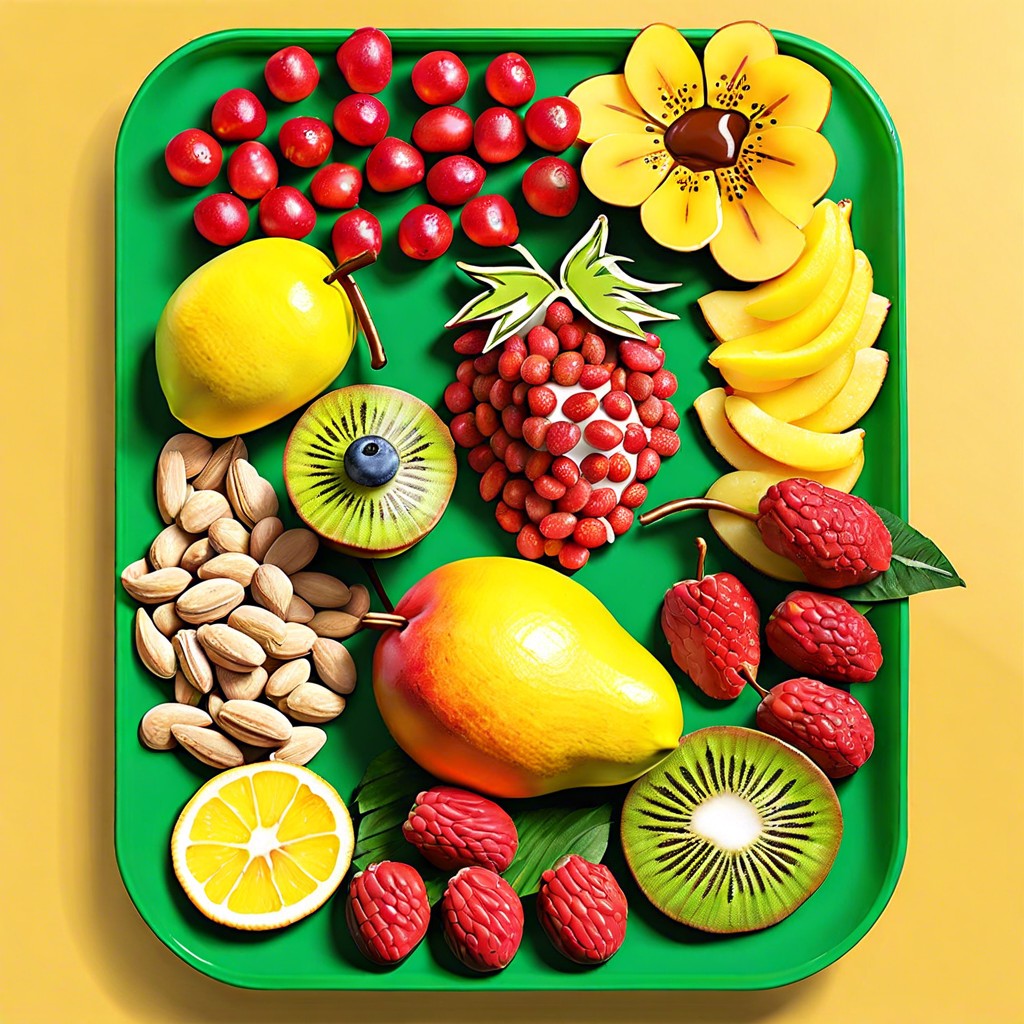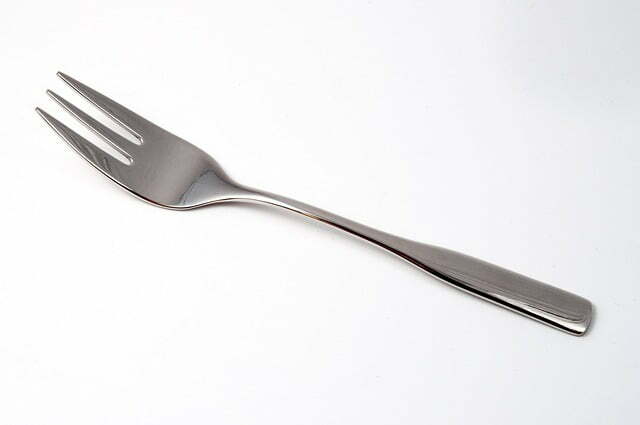Discover the art of creating an eye-catching and delicious deli tray by following our simple step-by-step guide, perfect for your next gathering or event.
Planning a party or gathering can be both exciting and stressful. One of the most important aspects of any event is the food, but figuring out what to serve can be overwhelming.
That’s where deli trays come in handy! They’re a crowd-pleasing option that offers something for everyone. But how do you make a deli tray that looks as good as it tastes? In this article, we’ll break down everything you need to know about creating the perfect deli tray for your next event.
From selecting meats and cheeses to arranging them on a platter, we’ve got you covered. So let’s get started!
Choosing the Right Platter

When it comes to creating a deli tray, choosing the right platter is key. Not only does it serve as the foundation for your presentation, but it can also impact how easy or difficult it is to arrange and access all of your items.
Consider the size of your gathering and how much food you plan on serving when selecting a platter. A larger group will require a bigger platter while smaller gatherings may be able to get by with something more modest in size.
In addition to size, think about what type of material you want for your platter. Glass or ceramic options are great if you’re looking for something that’s both functional and visually appealing since they allow guests to see everything on display from all angles.
If portability is important, consider using disposable plastic trays that come with lids so that they can easily be transported without worrying about spills or messes.
Selecting Quality Meats
Look for fresh, high-quality cuts of meat that are free from any signs of spoilage or discoloration. Opt for a variety of textures and flavors by including both cured and uncured meats such as salami, prosciutto, ham, turkey breast or roast beef.
Consider the preferences and dietary restrictions of your guests when choosing which types of meat to include on your tray. For example, if you have vegetarian guests attending the event then consider adding some plant-based protein options like tofu or tempeh.
It’s also important to keep in mind how much meat you’ll need based on the number of people attending your event. A good rule-of-thumb is about 2-3 ounces per person if there will be other food options available as well.
Variety of Cheeses
The key to selecting the right cheeses for your tray is variety. You want to offer a range of textures, flavors, and colors that will entice your guests’ taste buds.
Start by choosing at least three different types of cheese: one soft (like brie or goat cheese), one semi-soft (like gouda or havarti), and one hard (like cheddar or parmesan). This will give you a good base from which to build.
Next, consider adding some specialty cheeses like blue cheese or feta for added interest. These bold-flavored options can be paired with milder meats like turkey breast or ham for balance.
Don’t forget about presentation! Cut each type of cheese into bite-sized pieces so they’re easy to grab with crackers or bread slices. Arrange them on the platter in alternating patterns for visual appeal.
Incorporating Fresh Produce
Not only do fruits and vegetables provide a healthy option for guests who may be watching their diet, but they also make the platter look more visually appealing. When selecting produce for your deli tray, consider what’s in season and what will complement the other items on the platter.
Some popular options include cherry tomatoes, cucumber slices, carrot sticks or baby carrots with dip cups nearby.
You can also incorporate some fruit into your deli tray by adding grapes or berries that pair well with cheese selections like brie or gouda. Sliced apples are another great addition that pairs well with ham or turkey.
When arranging fresh produce on your platter try to keep them separate from meats so as not to cross-contaminate any of the food items on display.
Adding Fresh and Dried Fruits
Fresh fruit options like grapes, strawberries, kiwi slices or pineapple chunks can be used as palate cleansers between bites of meat and cheese. Dried fruits such as apricots or cranberries are also a great addition that adds sweetness without being overpowering.
When selecting fresh fruit for your deli tray consider the seasonality of the produce. In-season fruits will not only taste better but they will also be more affordable than out-of-season options.
Dried fruit is an excellent option if you want to add some variety in terms of texture on your platter. They’re easy to store and have a long shelf life which makes them perfect for preparing ahead of time.
Including a Selection of Nuts
They also offer a healthy option for guests who may be watching their diets. When selecting nuts for your deli tray, consider offering a variety of options such as almonds, cashews, walnuts or pecans.
You can choose to include them in their natural state or opt for roasted and salted varieties.
To add some extra flair to your nut selection, try incorporating flavored nuts like honey-roasted almonds or spicy peanuts. These unique flavors will add an unexpected twist that is sure to impress your guests.
When arranging the nuts on the platter, consider placing them in small bowls or cups so they don’t mix with other items on the tray and remain easy-to-grab finger food throughout the event.
Veggie Options for a Balanced Tray
Vegetarian and vegan guests will appreciate having some veggie options on the platter. Not only does this make your tray more inclusive, but it also adds color and variety.
Some great veggie options include sliced cucumbers, cherry tomatoes, baby carrots, bell pepper strips or rings (red/yellow/orange), broccoli florets or cauliflower pieces with hummus dip on the side. You can also add some roasted vegetables like zucchini slices or eggplant rounds for a heartier option.
Including these colorful veggies not only provides balance in terms of nutrition but also makes your deli tray look more visually appealing by adding pops of vibrant colors throughout the platter.
Creating a Bread and Cracker Selection
Not only do they provide a vehicle for enjoying all of those delicious toppings, but they also add texture and variety to your platter. When selecting breads, consider offering both sliced loaves (such as baguette or sourdough) and smaller rolls or buns.
This allows guests to choose their preferred size of bread based on how much meat and cheese they want in each bite.
For crackers, aim for variety in terms of flavor profile (e.g., plain vs seasoned), shape (e.g., round vs square), and texture (e.g., crispy vs crunchy). Consider including gluten-free options if you have guests with dietary restrictions.
To keep things organized on your platter, arrange the different types of breads/crackers in separate sections so that guests can easily identify what’s available.
Incorporating Crackers and Breads
These items not only add texture to the platter but also provide a base for your meats, cheeses, and spreads. When selecting crackers or bread, consider choosing options that complement the flavors of your other ingredients.
For example, if you have spicy meats or bold cheeses on your tray, opt for plain water crackers or sliced baguette to balance out those flavors. On the other hand, if you have mild meats like turkey or ham with subtle cheese choices such as brie or gouda then try incorporating flavored crackers like rosemary-infused ones.
It’s always good practice to offer gluten-free options as well so everyone can enjoy this delicious spread! Consider adding rice cakes instead of traditional wheat-based products.
When arranging these items on your platter be sure they are placed in an easily accessible location so guests can grab them quickly without disrupting any other elements on the board.
Adding Condiments and Spreads
They add flavor, texture, and variety to your platter. When selecting condiments, consider the flavors of the meats and cheeses you’ve chosen.
For example, if you have spicy salami or pepper jack cheese on your tray, consider adding a sweet jam or honey to balance out the heat.
Some popular options for condiments include mustard (both yellow and Dijon), mayonnaise (regular or flavored), hummus (plain or flavored), pesto sauce, tapenade spread made with olives & capers etc.
You can also add some classic sandwich toppings like lettuce leaves/tomato slices/onion rings/pickles/pepperoncini peppers etc., which will give an extra crunchiness to each bite.
Highlighting Condiments and Spreads
Don’t overlook the importance of condiments and spreads! These little additions can take your deli tray from good to great by adding extra flavor and texture. Here are some ideas for highlighting condiments and spreads on your next deli tray:
1. Mustards: Offer a variety of mustards such as Dijon, honey mustard or spicy brown mustard.
2. Hummus: A healthy dip option that pairs well with veggies or pita chips.
3. Jams & Preserves: Sweet jams like fig jam or apricot preserves pair perfectly with salty meats like prosciutto.
4. Chutneys & Relishes: Add some tangy flavors with chutneys made from fruits like mangoes or relishes made from pickled vegetables.
5. Olive Tapenade: This spread is perfect for olive lovers; it’s savory, briny taste goes well with crackers.
6. Pesto: Pesto adds an herby freshness that complements cured meat nicely.
Including Pickles and Olives
They add a tangy, salty flavor that complements the meats and cheeses perfectly. When selecting pickles for your tray, consider offering both dill and sweet varieties to cater to different tastes.
You can also include pickled vegetables like carrots or cauliflower for added variety.
Olives come in many different types, including green, black, Kalamata, and stuffed varieties like blue cheese or garlic-stuffed olives. Consider mixing up the olive selection on your platter by offering a few different types.
When arranging your deli tray with pickles and olives included make sure they are placed strategically throughout the platter so guests can easily access them without having to dig through other items on the plate.
Arranging for Easy Access
This means placing items in a logical order and grouping similar foods together. Start by placing the larger items on the platter first, such as meats and cheeses, then fill in any gaps with smaller items like fruits or nuts.
Consider how people will approach the tray – will they be standing around it or sitting at a table? If they’ll be standing, arrange taller items towards the back of the platter so that shorter ones are easier to reach. If guests will be seated at a table, place bowls of condiments within easy reach.
Another tip is to use small serving utensils for each item on your deli tray. This not only makes it easier for guests to serve themselves but also helps prevent cross-contamination between different foods.
Arranging the Items for Visual Appeal
The key is to create an eye-catching display that also makes it easy for guests to access the food. Start by placing larger items like whole fruits or bowls of dips on opposite corners of the platter.
Then fill in any gaps with smaller items like nuts or crackers.
Next, add height and dimension by rolling slices of meat into rosettes or folding cheese slices into triangles. You can also use toothpicks to stack small pieces of meat and cheese together.
To make your deli tray even more visually appealing, consider adding garnishes such as fresh herbs or edible flowers around the edges of the platter.
Garnishing for Visual Appeal
Adding small touches to your platter can make all the difference in how it looks and feels. The key is to keep it simple and not overdo it with too many garnishes that may overpower the flavors of your meats, cheeses, fruits, and vegetables.
One easy way to add visual appeal is by incorporating fresh herbs such as rosemary or thyme sprigs around the edges of your platter. This adds color while also providing a pleasant aroma that complements the flavors on display.
Another option for garnishing is using edible flowers like nasturtiums or pansies which are both beautiful and tasty additions to any deli tray. They add pops of color while also being completely safe for consumption.
Consider adding some sliced citrus fruits like lemons or oranges around your platter’s edges; this will give off a refreshing scent while adding more colors into play!
Accommodating Dietary Needs
Whether they have food allergies or follow specific diets such as vegetarian or gluten-free, accommodating their needs will ensure that everyone can enjoy the spread.
For those with gluten sensitivities, be sure to include crackers and bread options that are labeled “gluten-free.” You can also add some rice crackers for an extra option.
If you have vegan guests attending your event, make sure there are plenty of vegetable options available on the tray. Hummus is a great dip option for vegans and non-vegans alike.
For those with nut allergies, avoid including nuts in any form on your deli tray. Instead opt for seeds like pumpkin seeds or sunflower seeds as an alternative protein source.
Estimating Portion Sizes
You don’t want your guests to go hungry, but you also don’t want an excess of leftovers. So how do you estimate portion sizes for your deli tray? A good rule of thumb is to plan for about 2-3 ounces per person for each type of meat and cheese on the platter.
For example, if you’re serving three types of meats and two types of cheeses at a party with 20 people attending, plan on purchasing around 120 ounces (or roughly seven and a half pounds) total.
It’s also important to keep in mind any dietary restrictions or preferences that your guests may have when estimating portion sizes. If there are vegetarians or vegans in attendance, make sure there are plenty of non-meat options available such as hummus or roasted vegetables.
Serving and Storage Tips
First and foremost, make sure the tray is kept at a safe temperature before serving. If you’re transporting the tray, keep it in a cooler with ice packs or refrigerate until ready to serve.
When setting up your deli tray for guests, consider placing utensils nearby for easy access. You may also want to include small plates or napkins so guests can easily grab what they need without having to search around.
If there are leftovers after the event has ended, be sure not leave them out at room temperature for more than two hours as this can lead to foodborne illness. Instead of leaving everything on one large platter in case people want seconds later on during an event; divide everything into smaller portions that can be stored separately in containers with lids that seal tightly.
Budgeting for a Deli Tray
Fortunately, creating a deli tray doesn’t have to break the bank. With some careful planning and smart shopping choices, you can create an impressive spread without overspending.
One way to save money on your deli tray is by purchasing meats and cheeses in bulk from warehouse stores or discount supermarkets. You can also opt for less expensive cuts of meat or cheese that still offer great flavor but are more affordable.
Another cost-saving tip is to incorporate seasonal produce into your platter as they tend to be cheaper when in season. Buying fruits and vegetables from local farmers’ markets may help you save money while supporting small businesses at the same time.
Lastly, don’t forget about presentation! A well-arranged platter with thoughtful garnishes will make even simple ingredients look more appealing and upscale than they actually are.
Pairing With Beverages
When it comes to selecting drinks, consider both alcoholic and non-alcoholic options that complement the flavors of your meats, cheeses, and other items on the tray.
For a classic pairing option, serve red or white wine alongside a meat-heavy deli tray. A full-bodied Cabernet Sauvignon pairs well with bold-flavored meats like salami or prosciutto while Chardonnay complements milder cheese selections like brie or gouda.
If you’re looking for non-alcoholic options that still pack a punch in terms of flavor pairings, try serving iced tea with lemon alongside turkey breast slices topped with cranberry sauce. The tartness from both ingredients will balance out any sweetness in the sauce while also refreshing palates between bites.
Ultimately, when it comes to beverage pairings for your deli tray spread – don’t be afraid to get creative! Experimentation is key when finding new combinations that work well together and will leave guests raving about their dining experience long after they’ve left your event.
FAQ
How do you make a cold cut tray?
To make a cold cut tray, arrange lettuce, sliced tomatoes, pickles, onions, mayonnaise, different mustards, and if opting for an Italian platter, include imported salami, mortadella with pistachios, hot capicola, and some interesting pickles and spreads.
How far in advance can I make a deli tray?
You can make a deli tray a few hours ahead of time, just wrap it in plastic wrap and store it in the fridge, taking it out 30-40 minutes before serving.
What are the best deli meats and cheeses to include on a deli tray?
Some of the best deli meats and cheeses to include on a deli tray are ham, turkey, roast beef, salami, Swiss, cheddar, provolone, and pepper jack.
How should a deli tray be arranged for an appealing presentation?
Arrange a deli tray by placing a variety of meats, cheeses, and accompaniments in a visually appealing manner, ensuring colors and textures are well-distributed to create an enticing presentation.
What are some popular accompaniments and garnishes to serve alongside a deli tray?
Some popular accompaniments and garnishes to serve alongside a deli tray include assorted crackers, fresh vegetables, dipping sauces, cheeses, olives, and pickles.



